If you’ve ever found a longhaul airline flight gruelling, spare a thought for those expert longhaulers, the kūaka /bar-tailed godwits (Limosa lapponica baueri) – currently departing for Alaska. They take a record-breaking 8-11 day flight as part of their migration from Alaska to New Zealand and back every year, feeding and breeding in Alaska during the Northern Hemisphere summer, then migrating south for the northern winter.
Note: We are re-sharing our articles. This article was originally published on March 22, 2021.
It’s the longest migration route of any bird in the world. Satellite-tracked birds had an average flight speed of 56 km per hour.
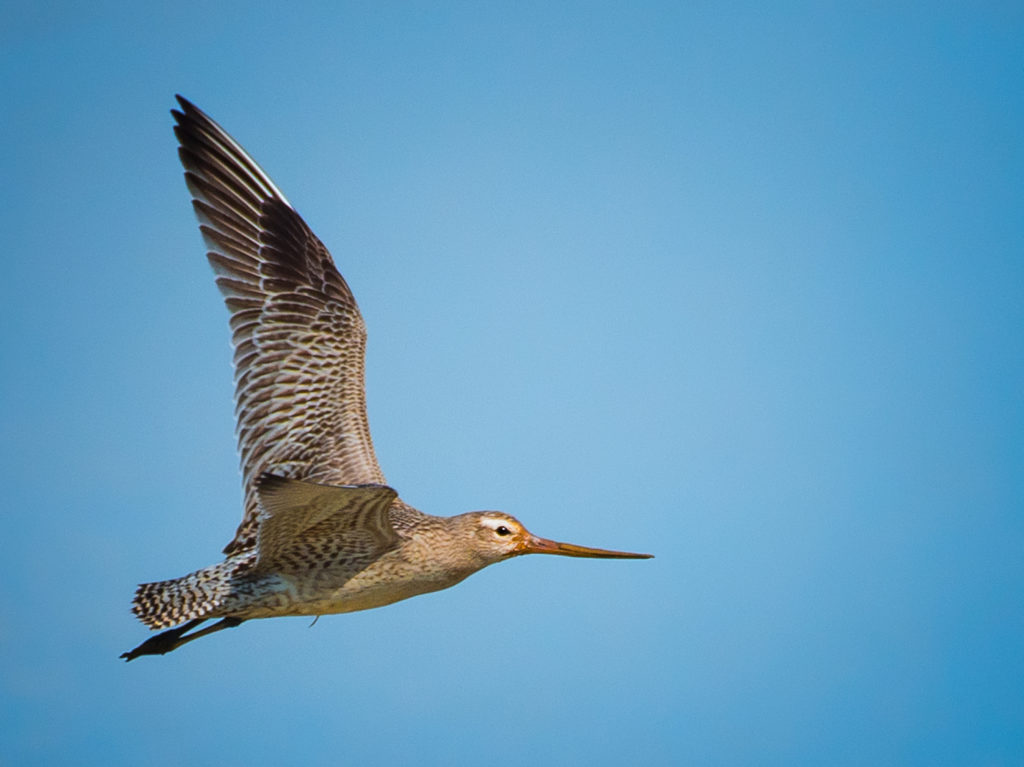
To track the return journey, seven birds in New Zealand were tagged with surgically-implanted transmitters and tracked by satellite to the Yellow Sea in China, a distance of 9,575 km. The actual track flown by one bird was 11,026 km, taking nine days. Kūaka rest up and feed in the Yellow Sea area for about 41 days before travelling on to Alaska, another 7,000 kilometres away, so the Yellow Sea is a key staging post on their journey.
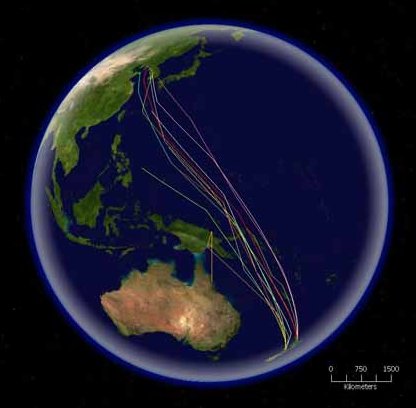
Female godwit ‘E7’ flew onward from China to Alaska and stayed there for the breeding season. Then in August 2007 she departed on an eight-day non-stop flight from western Alaska to the Piako River near Thames, New Zealand, setting a new known flight record of 11,680 km. In total, ‘E7’ made a 174 day round-trip journey of 29,280 km with 20 days of flying. In September 2020, a tagged male bird flew from Alaska to New Zealand in 11 days, a journey length estimated at 12,200 km.
So for over a week there’s no rest, no inflight meals and kūaka are exposed to whatever storms and gales the weather wants to throw at them. Unlike albatross and other seabirds, migrating waders can’t rest on the ocean or dive underwater to catch a meal along the way. Once bar-tailed godwits start on their migration, they’re committed.
Not only do kūaka make the longest non-stop flight of any bird species – it’s also they longest journey without pausing to feed made by ANY animal. They don’t eat and they’re burning off huge amounts of energy in flying. So how do they even survive the journey?
Godwits fatten up as much as they can before each trip. After all, the purpose of these epic journeys is to take advantage of seasonal food abundance in opposite sides of the world. They feed on bristle-worms and shellfish on coastal mudflats and estuaries.
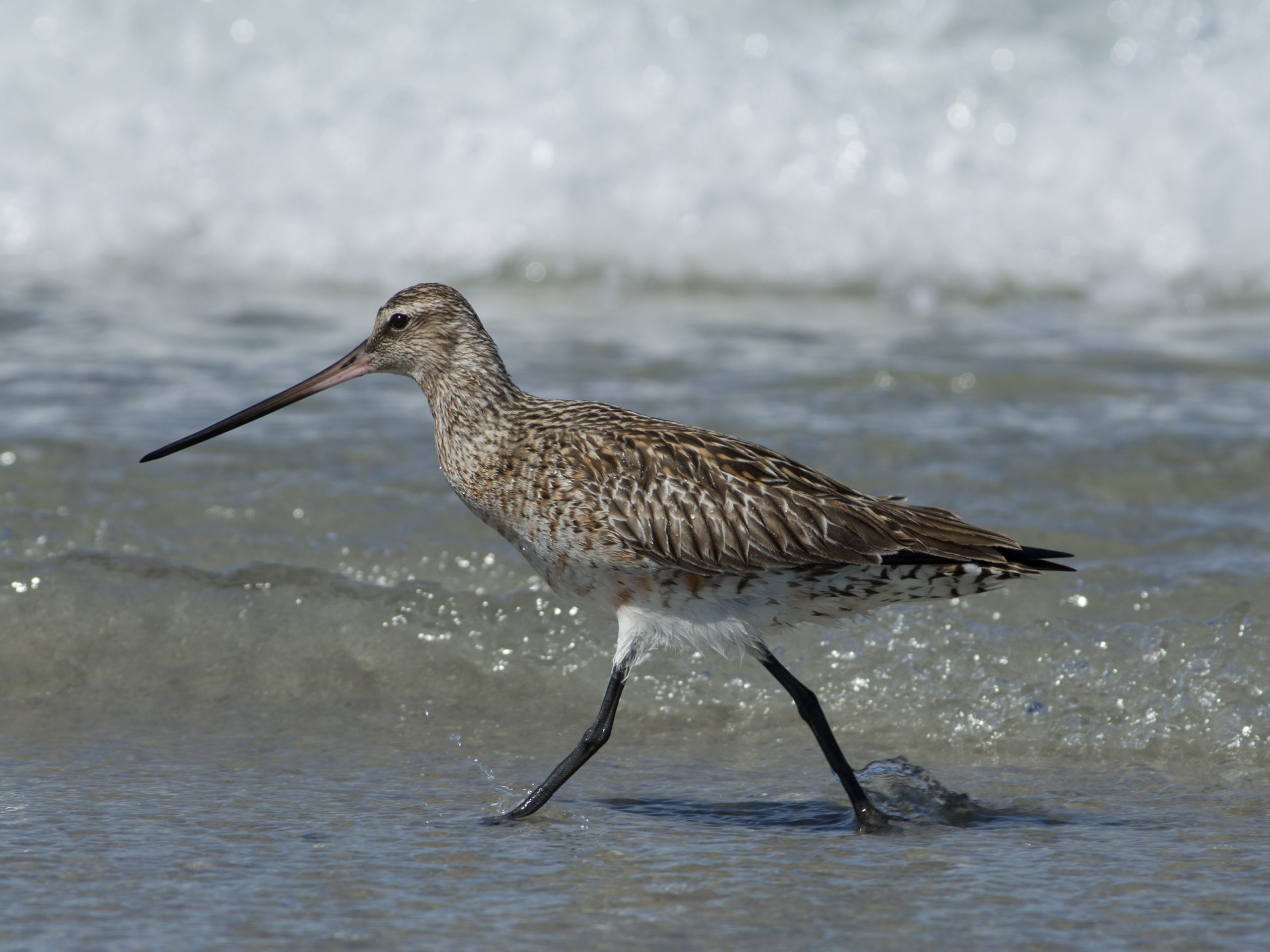
Male bar-tailed godwits are smaller than females and have shorter bills. In a study at the Manawatū Estuary, shorter-billed birds (males) fed mostly on small surface prey like Potamopyrgus snails, half being snail specialists, whereas females consumed more deeply-buried prey such as worms; the birds also displayed some individual food preferences.
Kūaka carry the greatest fat loads of any migratory bird so far studied and they achieve such a massive fat store by reducing the size of their digestive organs. Young godwits also have to grow up fast to make their first epic migration.
Kūaka breed on upland and coastal tundra on the western rim of Alaska, from the coast to up to 200 km inland, from the Gulf of Alaska to North Slope. A clutch of four eggs is laid in a shallow bowl often lined with lichen.
While they don’t quite rival our large egg-laying kiwi, godwit eggs are still relatively big. Each egg is approximately 11% of a female’s body mass. The pay-off for these huge eggs is fully developed and mobile chicks at hatching. Young fledge after 28-30 days and juveniles arrive in New Zealand after their first trans-Pacific flight when barely four months old.
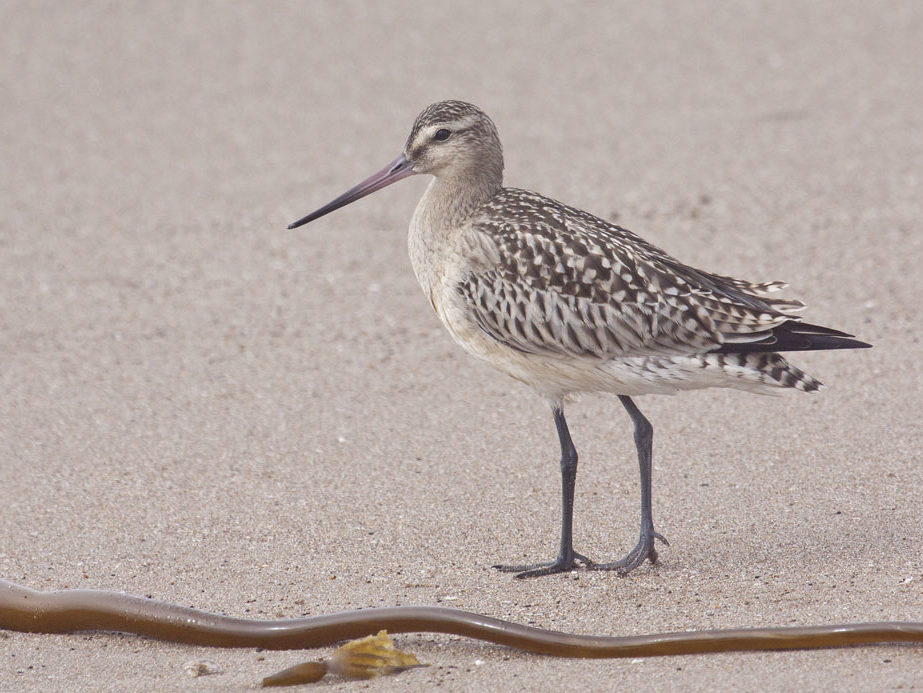
Birds generally begin arriving in New Zealand from early September. They begin departing on northern migration from early March, heading for refuelling sites around the Yellow Sea. They do not breed until their third or fourth year, so each southern winter there are hundreds of non-breeding birds remaining in New Zealand.
It’s thought that kūaka may even be able to predict the weather when choosing their departure date. Birds will often depart early from New Zealand if there are favourable winds; they seem to be able to predict weather patterns that will assist them on the entire migration route.
They also get noisier just before leaving our shores. Godwits most commonly call in flight, usually a-wik,a-wik,a-wik. For most of their time in New Zealand they are usually silent on the ground, but immediately before migration departures there is a notable increase in both frequency and volume of calls from individuals that are about to leave.
Bar-tailed godwit adult survival rates decreased between 2005 and 2012, probably because of the loss of intertidal staging areas in the Yellow Sea. The construction of seawalls and the reclamation of mudflats have led to a critical reduction in food supplies for migrating birds and numbers of kūaka have declined in New Zealand from over 100,000 in the late 1980s to 67,500 in 2018.
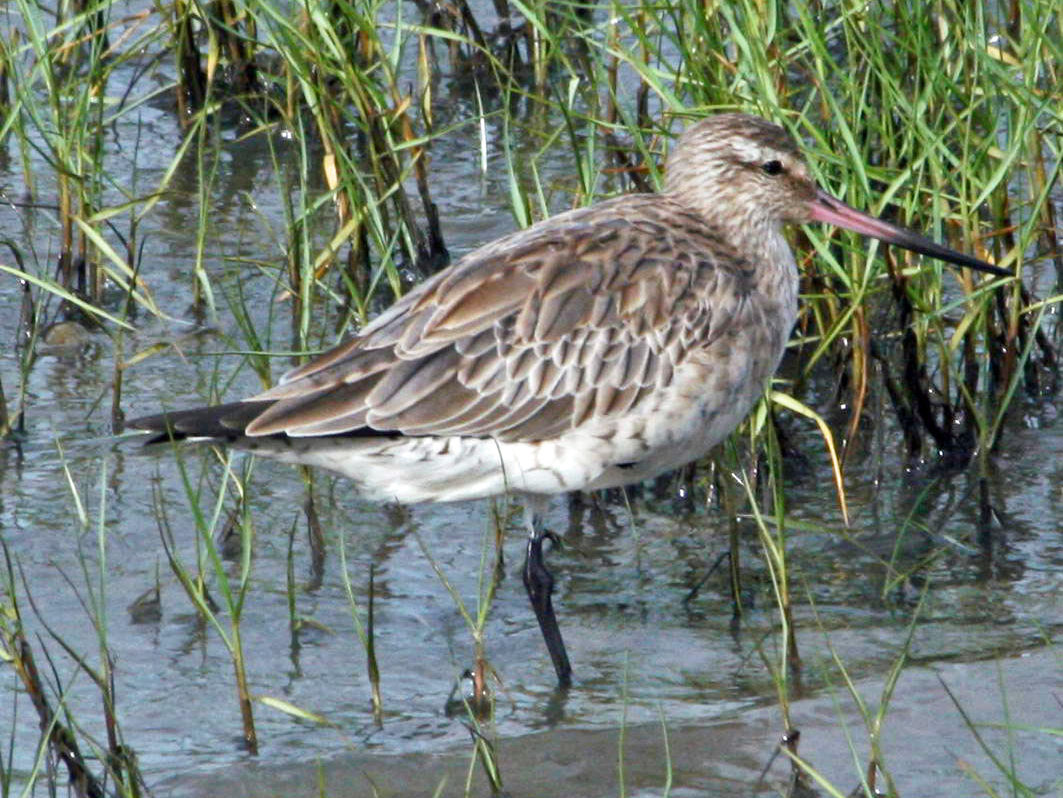
Although numbers have reduced, godwits are still the most common Arctic tundra-breeding shorebird to occur in New Zealand and hold cultural significance for many New Zealanders. Because they don’t breed in New Zealand, for Maori they were birds of mystery, (‘Kua kite te kohanga kuaka? Who has seen the nest of the kuaka?’) and were believed to accompany spirits of the departed; but they were also a source of food.
The English term ‘godwit’ was first recorded in about 1416–17 and may be an imitation of the bird’s call, or be derived from the Old English ‘god whit’, meaning ‘good creature’, maybe because it was good to eat. The ‘barred’ part of its English name is taken from the black-and-white barred tail and upper tail coverts in this species. In French the godwit is known as barge rousse, Russian maliy veretennik, Inuit chiuchiuchiak, Yup’ik tevatevaaq, and Māori kūaka.
Kūaka are widely distributed around the country and some birds may occur on almost any harbour or estuary so it’s worth keeping an eye out. But the bulk of the population occur at larger sites: Parengarenga, Kaipara, Manukau, Firth of Thames, and Farewell Spit. Other good sites to spot these epic longhaul record-breakers include Rangaunu, Whangarei, Tauranga, Ohiwa, Kawhia, Porongahau, Foxton Beach, Tasman and Golden Bays, Avon-Heathcote, Blueskin Bay, and Invercargill Estuary/Awarua Bay where you’ll see them foraging on soft intertidal substrates. They may also be found probing in wet pastures nearby.

